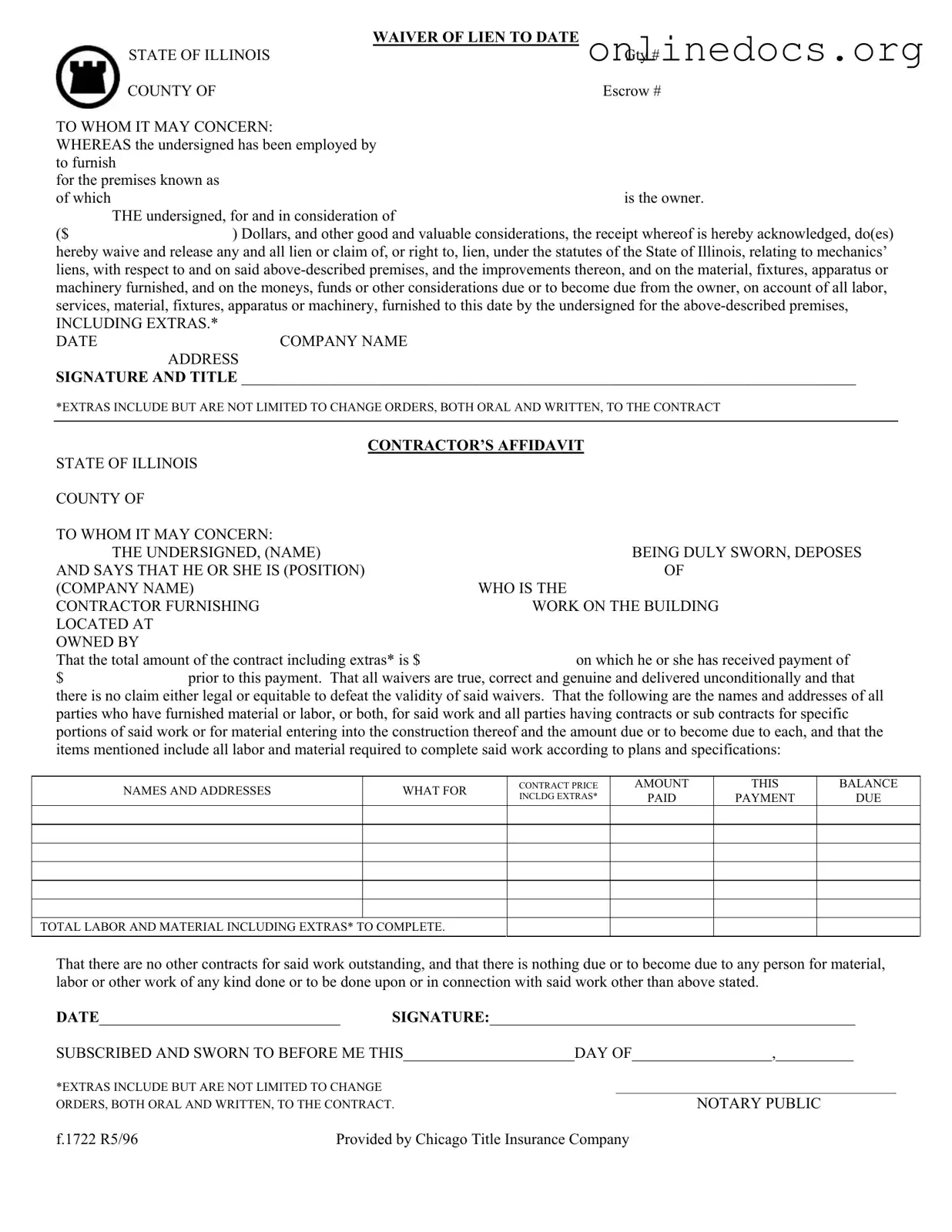The Chicago Title Waiver Format form shares similarities with a Release of Lien document. Both serve to eliminate any claims against a property for unpaid services or materials. A Release of Lien is typically executed by a contractor or subcontractor after receiving payment, confirming that they waive their right to file a lien against the property. Like the Chicago Title Waiver, this document aims to provide assurance to property owners that they are free from any future claims related to the work performed.
For those looking to sell or purchase a trailer, the comprehensive Trailer Bill of Sale form is essential. This document not only facilitates the transfer of ownership but also includes key details such as the trailer's identification number and sale price, making it an indispensable part of the transaction process.
Another related document is the Conditional Waiver of Lien. This document is often used when a payment is made but not yet cleared. It provides a temporary waiver of lien rights, contingent upon the receipt of funds. Similar to the Chicago Title Waiver, it protects the property owner by assuring them that the contractor will not pursue a lien as long as the payment is honored. This conditional aspect adds a layer of security for both parties involved in the transaction.
The Unconditional Waiver of Lien is also comparable to the Chicago Title Waiver Format. This document is executed after a payment is made and clears all lien rights immediately. It provides the property owner with peace of mind, knowing that no claims will arise from the contractor or subcontractor regarding unpaid services. This waiver is often preferred by property owners, as it eliminates any uncertainty about potential future claims.
A Contractor’s Affidavit bears resemblance to the Chicago Title Waiver in its purpose of affirming that all payments and waivers are accurate and complete. This affidavit, executed by the contractor, details the total contract amount, payments received, and any outstanding balances. It serves as a declaration of honesty and transparency in the financial dealings related to the property, similar to the assurances provided in the Chicago Title Waiver.
The Final Waiver of Lien is another document that aligns with the Chicago Title Waiver Format. This document is typically used at the completion of a project, confirming that all contractors and subcontractors have been paid in full. It ensures that no further claims can be made against the property, thereby protecting the owner from future liabilities. The Final Waiver reinforces the intent of the Chicago Title Waiver to provide a clean slate for property ownership.
Lastly, the Notice of Intent to Lien is related as it serves as a preliminary warning before a lien is filed. This document informs property owners that a contractor intends to file a lien due to non-payment. While it does not provide the same level of protection as the Chicago Title Waiver, it highlights the importance of timely payments and the potential consequences of failing to fulfill financial obligations. Understanding this notice can help property owners avoid the complications that waivers like the Chicago Title Waiver aim to prevent.
